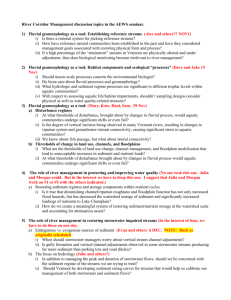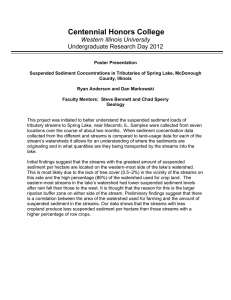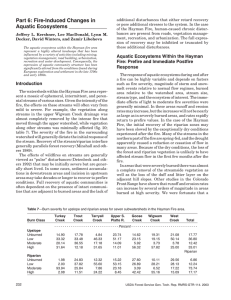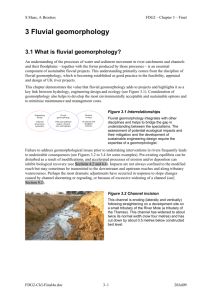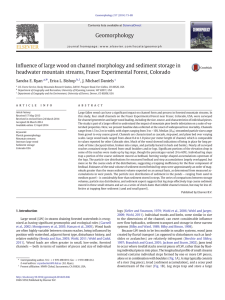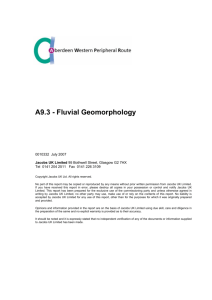AEWS Seminar Topics/Questions: River Corridor Management
advertisement
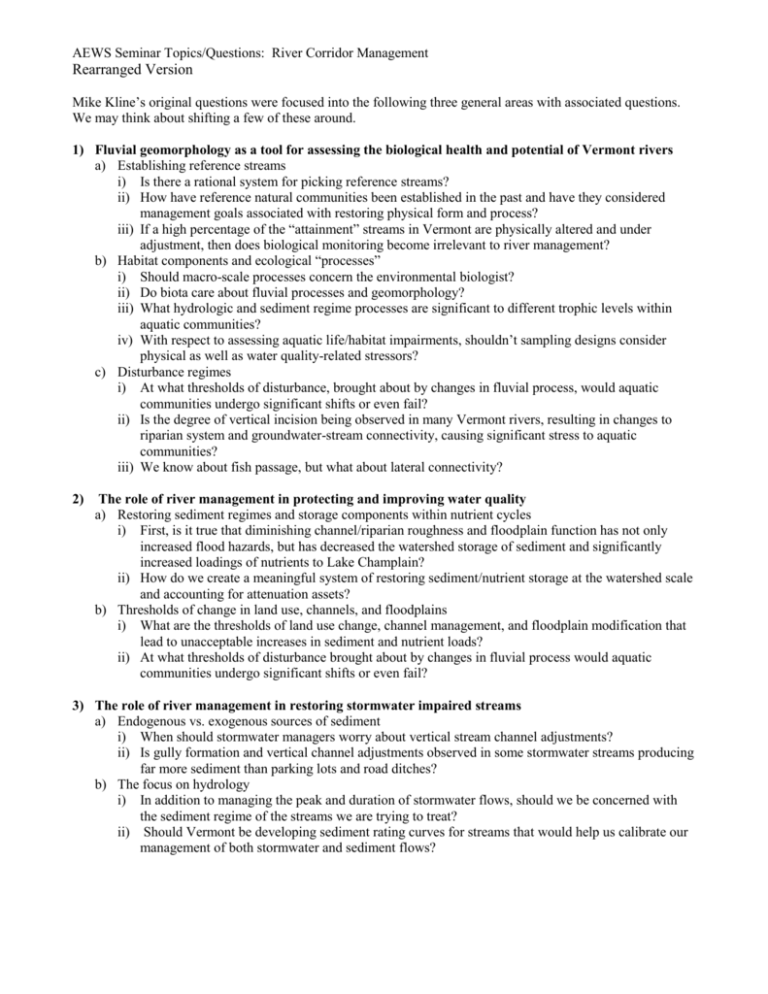
AEWS Seminar Topics/Questions: River Corridor Management Rearranged Version Mike Kline’s original questions were focused into the following three general areas with associated questions. We may think about shifting a few of these around. 1) Fluvial geomorphology as a tool for assessing the biological health and potential of Vermont rivers a) Establishing reference streams i) Is there a rational system for picking reference streams? ii) How have reference natural communities been established in the past and have they considered management goals associated with restoring physical form and process? iii) If a high percentage of the “attainment” streams in Vermont are physically altered and under adjustment, then does biological monitoring become irrelevant to river management? b) Habitat components and ecological “processes” i) Should macro-scale processes concern the environmental biologist? ii) Do biota care about fluvial processes and geomorphology? iii) What hydrologic and sediment regime processes are significant to different trophic levels within aquatic communities? iv) With respect to assessing aquatic life/habitat impairments, shouldn’t sampling designs consider physical as well as water quality-related stressors? c) Disturbance regimes i) At what thresholds of disturbance, brought about by changes in fluvial process, would aquatic communities undergo significant shifts or even fail? ii) Is the degree of vertical incision being observed in many Vermont rivers, resulting in changes to riparian system and groundwater-stream connectivity, causing significant stress to aquatic communities? iii) We know about fish passage, but what about lateral connectivity? 2) The role of river management in protecting and improving water quality a) Restoring sediment regimes and storage components within nutrient cycles i) First, is it true that diminishing channel/riparian roughness and floodplain function has not only increased flood hazards, but has decreased the watershed storage of sediment and significantly increased loadings of nutrients to Lake Champlain? ii) How do we create a meaningful system of restoring sediment/nutrient storage at the watershed scale and accounting for attenuation assets? b) Thresholds of change in land use, channels, and floodplains i) What are the thresholds of land use change, channel management, and floodplain modification that lead to unacceptable increases in sediment and nutrient loads? ii) At what thresholds of disturbance brought about by changes in fluvial process would aquatic communities undergo significant shifts or even fail? 3) The role of river management in restoring stormwater impaired streams a) Endogenous vs. exogenous sources of sediment i) When should stormwater managers worry about vertical stream channel adjustments? ii) Is gully formation and vertical channel adjustments observed in some stormwater streams producing far more sediment than parking lots and road ditches? b) The focus on hydrology i) In addition to managing the peak and duration of stormwater flows, should we be concerned with the sediment regime of the streams we are trying to treat? ii) Should Vermont be developing sediment rating curves for streams that would help us calibrate our management of both stormwater and sediment flows?
